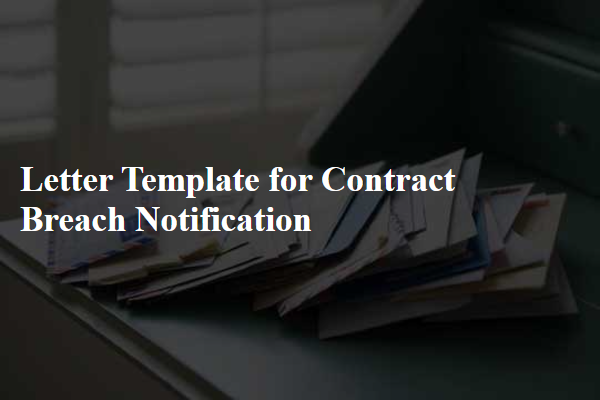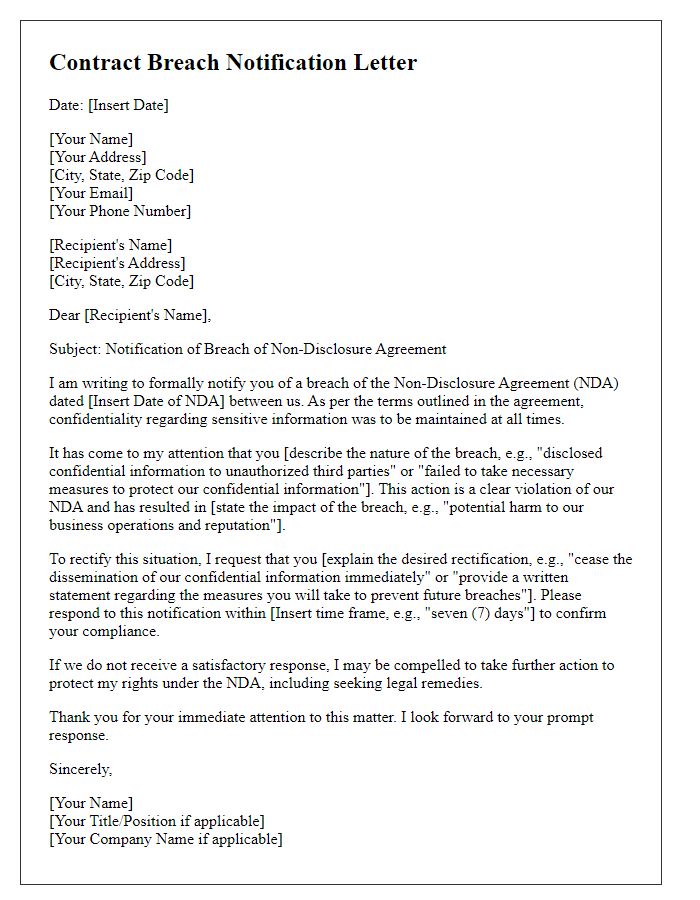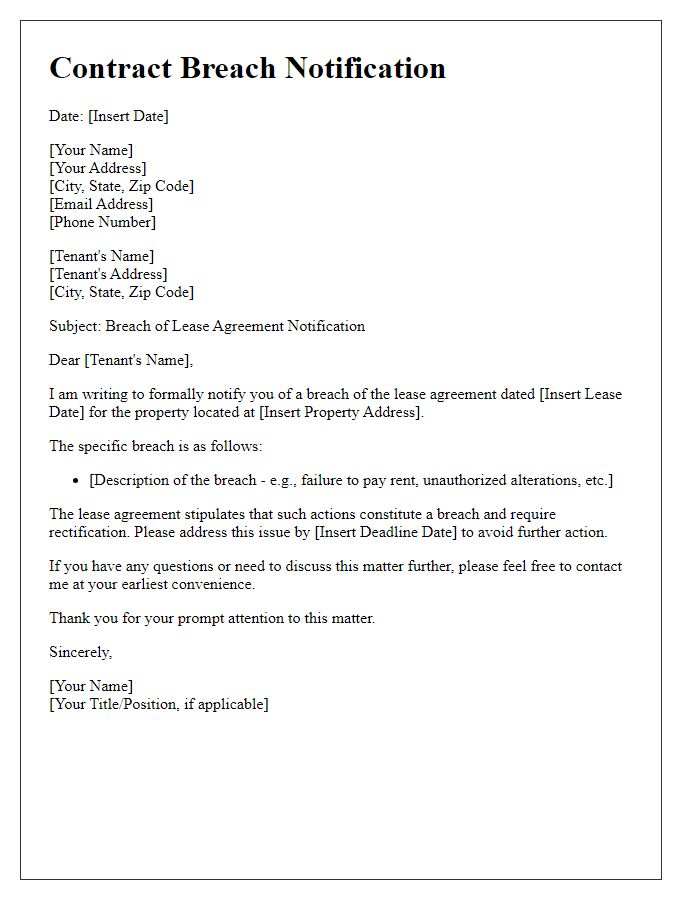Are you dealing with a contract breach and unsure how to address it? Writing a letter to notify the offending party can help clarify the situation and protect your rights. This letter not only serves as documentation of the breach but also opens the door for resolution. Curious about how to craft the perfect notification letter? Keep reading for our detailed template!

Clear identification of parties involved
Party identification in a contract breach notification is crucial for clarity. The first party often includes the individual or organization who initiated the contract, such as "XYZ Corporation," based in New York City, formed under New York State laws. The second party typically includes the one receiving the notification, for instance, "ABC Industries," located in Los Angeles, California, registered under the laws of California. Inclusion of relevant details like the contract's effective date (January 1, 2023) and specific provisions related to the breach (e.g., delivery deadlines) ensures that each party is unmistakably recognized. This precision prevents further disputes and facilitates a clear understanding of the obligations being addressed.
Detailed description of the breach
Inadequate construction quality has been identified as a significant breach of contract obligations within the commercial building project located at 123 Main Street, Springfield. Documentation reveals multiple instances where the materials utilized fail to meet the specified industry standards, particularly the use of subpar concrete that does not adhere to the American Concrete Institute's regulations. Inspectors observed visible cracks and structural weaknesses during evaluations conducted on September 10, 2023, endangering the safety and longevity of the building. Furthermore, delays in the timeline outlined in the contract, originally set for completion on August 1, 2023, extend the inconvenience to stakeholders, potentially leading to financial repercussions. The failure to execute necessary repairs and to comply with safety mandates poses a direct violation of the terms agreed upon in the contract, jeopardizing the integrity of the entire project.
Reference to specific contract terms violated
In the event of a contract breach, clear communication is essential. Parties must reference specific contract terms that have been violated to ensure clarity and facilitate resolution. For instance, the contract clause concerning payment schedules may highlight delays in payments, indicating a breach of financial obligations. Other potential violations could relate to delivery timelines outlined in section 5, where failure to deliver goods by agreed dates signifies non-compliance. Furthermore, failure to uphold confidentiality as stipulated in clause 8 could result in legal repercussions. Documenting these breaches precisely helps establish a case for remedy and encourages prompt corrective actions.
Consequences of breach outlined
A contract breach notification serves as a formal alert regarding an infraction of agreement terms, such as contracts signed in legal agreements or business transactions. This notification typically details potential consequences which may include financial penalties, enforced mediation sessions, or the possibility of legal action in accordance with jurisdictional laws. Parties involved in a contract, such as businesses or individuals, must be mindful of stipulations regarding notice periods and specific remedies outlined in the agreement. Consistent breaches could lead to termination of the contract, affecting ongoing projects and business relationships significantly. Documentation such as emails, memos, or recorded conversations may be gathered to support the breach claim.
Request for remedy or resolution timeframe
A breach of contract may involve significant implications for affected parties, such as financial losses or service interruptions. For instance, a supplier failing to deliver goods by the agreed date can disrupt production schedules in manufacturing industries. The notification process typically involves formally addressing the breach, specifying the nature of the violation, citing relevant contractual obligations, and requesting a remedy within a defined timeframe, often 30 days. Proper documentation of the breach and communication history is essential in clarifying responsibilities and facilitating resolution discussions, potentially preventing legal disputes and preserving business relationships. Timely actions can ensure compliance with legal standards and may involve mediation or renegotiation efforts.
Letter Template For Contract Breach Notification Samples
Letter template of contract breach notification for partnership agreement.

Letter template of contract breach notification for employment contract.

Letter template of contract breach notification for construction contract.

Letter template of contract breach notification for non-disclosure agreement.










Comments